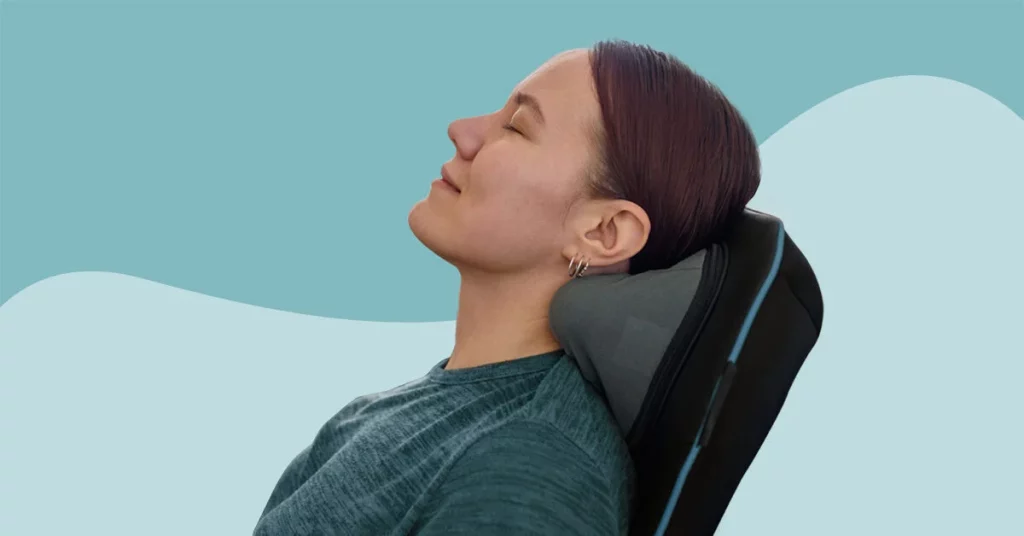Best Type of Massage for Neck and Shoulder Pain
Neck and shoulder pain can be incredibly uncomfortable and affect our daily lives. Whether it’s due to poor posture, stress, or muscle strain, finding relief is essential for overall well-being. One effective way to alleviate neck and shoulder pain is through massage therapy. In this article, we will explore the best types of massage specifically tailored for neck and shoulder pain and their numerous benefits.
Table of Contents
1. Introduction
Introduce the topic of neck and shoulder pain and its impact on daily life. Highlight the importance of finding suitable solutions for pain relief.
2. Understanding Neck and Shoulder Pain
Explain the common causes and symptoms of neck and shoulder pain. Discuss the prevalence of this issue and its impact on individuals.
3. Causes of Neck and Shoulder Pain
Explore the various factors that contribute to neck and shoulder pain, such as poor posture, muscle tension, injury, and stress. Emphasize the importance of addressing the underlying causes.
4. Importance of Massage for Neck and Shoulder Pain
Discuss why massage therapy is an effective treatment option for neck and shoulder pain. Highlight the holistic approach of massage in targeting both the physical and emotional aspects of pain relief.
5. Different Types of Massage for Neck and Shoulder Pain
5.1 Swedish Massage
Explain how Swedish massage utilizes long, gliding strokes to relax muscles and improve circulation. Discuss its effectiveness in reducing muscle tension and promoting overall relaxation.

5.2 Deep Tissue Massage
Describe deep tissue massage, focusing on its ability to target deep layers of muscle tissue. Highlight its effectiveness in releasing chronic muscle tension and breaking down scar tissue.
5.3 Trigger Point Massage
Explain the concept of trigger points and how trigger point massage targets these specific areas of muscle tightness. Discuss its ability to alleviate referred pain and improve range of motion.
5.4 Shiatsu Massage
Introduce the traditional Japanese technique of shiatsu massage, which involves applying pressure to specific points along the body’s meridians. Discuss its benefits for relieving muscle tension and promoting relaxation.
5.5 Sports Massage
Explain how sports massage combines various techniques to address muscle soreness, promote flexibility, and enhance athletic performance. Discuss its relevance for individuals with neck and shoulder pain resulting from physical activity.
5.6 Hot Stone Massage
Describe hot stone massage and its use of heated stones to warm and relax the muscles. Highlight its soothing effects and ability to enhance blood flow.
6. Benefits of Massage for Neck and Shoulder Pain
Discuss the wide range of benefits that massage therapy offers for individuals with neck and shoulder pain:
6.1 Pain Relief
Explain how massage can reduce pain and discomfort in the neck and shoulder area by releasing tension and promoting relaxation.
6.2 Improved Circulation
Discuss how massage therapy improves blood circulation, delivering oxygen and essential nutrients to the affected muscles and promoting healing.
6.3 Increased Range of Motion
Explain how massage techniques help increase flexibility and range of motion, allowing individuals to move their neck and shoulders more freely.
6.4 Stress Reduction
Highlight how massage can reduce stress and anxiety, promoting overall well-being and indirectly alleviating neck and shoulder pain caused by tension.
6.5 Muscle Relaxation
Discuss how massage therapy relaxes tight muscles, reducing muscle spasms and promoting a sense of relief.
7. How to Choose the Best Massage for Neck and Shoulder Pain
Provide guidance on selecting the most suitable type of massage for individual needs, considering factors such as personal preferences, pain severity, and specific goals.
8. Precautions and Considerations
Highlight important precautions and considerations to keep in mind when receiving massage therapy for neck and shoulder pain, including contraindications and communicating effectively with massage therapists.
9. Conclusion
Summarize the key points discussed in the article and reiterate the benefits of massage therapy for relieving neck and shoulder pain. Encourage readers to explore the various massage options available to find the most effective solution for their needs.

FAQs
- Is massage therapy safe for everyone?
Massage therapy is generally safe for most individuals. However, certain medical conditions or specific circumstances may require caution or consultation with a healthcare professional before receiving massage treatment. It’s important to inform your massage therapist about any existing health conditions, injuries, or concerns to ensure they can adapt the treatment accordingly and provide a safe experience.
- How often should I receive massage therapy for neck and shoulder pain?
The frequency of massage therapy sessions for neck and shoulder pain can vary depending on individual needs and the severity of the pain. For acute pain or specific injuries, more frequent sessions may be recommended initially. In general, regular sessions, such as once or twice a week, can provide optimal benefits. However, it’s best to consult with a qualified massage therapist who can assess your condition and recommend a personalized treatment plan.
- Can I combine different types of massage for better results?
Combining different types of massage can be beneficial in certain cases. The specific combination of massage techniques depends on individual preferences, the nature of the pain, and the recommendations of a skilled massage therapist. They can tailor a treatment plan that may involve integrating various modalities to address different aspects of your neck and shoulder pain and provide a more comprehensive approach to healing and relief.
- What should I expect during a massage therapy session?
During a massage therapy session, you can expect a tranquil and soothing environment where you will lie comfortably on a massage table. The massage therapist will use various techniques, such as kneading, rubbing, and gentle pressure, to target the affected areas of your neck and shoulders. They may also incorporate additional elements like oils, lotions, or hot stones for added relaxation. Communication is essential, so feel free to provide feedback regarding pressure, comfort, or any concerns you may have during the session.
- Are there any self-massage techniques I can try at home?
Yes, there are some self-massage techniques you can try at home to complement your professional massage therapy sessions. For example, you can gently massage your neck and shoulders using your hands or a tennis ball against a wall. Applying heat or cold packs to the affected areas can also help alleviate pain and reduce inflammation. However, it’s important to remember that self-massage techniques should be performed cautiously and within your comfort level, and if you experience any discomfort or worsening of symptoms, it’s advisable to consult with a healthcare professional or a qualified massage therapist.
Remember, if you have any specific concerns or questions about massage therapy for neck and shoulder pain, it’s always best to consult with a professional massage therapist or healthcare provider who can provide personalized advice based on your individual needs and condition.




